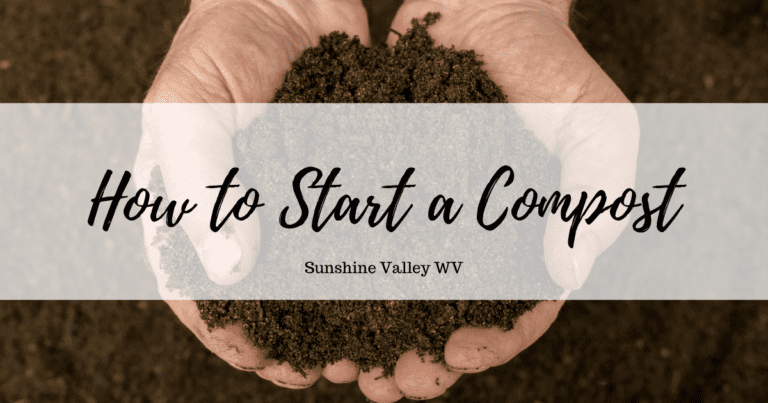How To Prepare Your Garden for Planting
Preparing Your Garden for a Sun-Filled Summer: Tips for a Bountiful Harvest

As the days stretch longer and the sun climbs higher in the sky, it’s a signal that summer is on the horizon. With a bit of effort and care, you can ensure your garden is primed for a season filled with lush growth and healthy, bountiful harvests. Get your gloves ready; it’s time to prepare your garden for the summer abundance.
Start with a Clean Slate
Embark on your gardening adventure by clearing out any leftover debris from previous seasons. Remove any dead plants, weeds, or unwanted material that may be lingering in your garden beds. This not only tidies up your space but also helps prevent the spread of disease and pests that could compromise your summer harvest.

Assess and Amend the Soil
Your garden’s health and productivity are intrinsically linked to the quality and condition of the soil in which your plants grow. Healthy soil forms the foundation of any prosperous garden, providing nutrients, stability, and support to a diverse range of flora. To ensure your garden reaches its full potential, it’s a good ideal to regularly test the soil to understand its pH levels and nutrient content. This allows you to take informed action to balance the soil’s makeup, which can significantly impact plant growth and health.
Aim to take soil samples from various parts of your garden, as the pH and nutrient levels can vary. Once you have your results, you may need to amend the soil to optimize it for the types of plants you wish to grow. If the soil is too acidic or alkaline, plants may not be able to absorb nutrients efficiently. You can add lime to raise the pH or sulfur to lower it. Aim for a pH that matches the preferences of your plants.
Beyond pH, your soil should be rich in essential nutrients like nitrogen, phosphorus, and potassium, along with a host of micronutrients. Deficiencies in any of these can lead to poor plant growth, weak yields, and a susceptibility to disease and pest infestations.
Organic matter plays a pivotal role in enriching the soil. Compost, leaf mold, or well-rotted manure are perfect for increasing the organic content of your soil, thus improving its structure, fertility, and water retention. These materials act like a sponge, holding moisture in the soil where it can be accessed by plant roots. They also encourage beneficial microbial activity, which aids in the breakdown of organic matter into nutrients that plants can use.
Incorporating organic matter isn’t a one-time task; it should be part of your ongoing garden maintenance. Each season, as you prepare beds and plant new crops, add more organic matter to ensure your soil remains healthy and productive. By placing a strong emphasis on creating and maintaining high-quality soil, you develop a nurturing environment that allows every plant in your garden the chance to flourish and thrive.
We will talk soon about starting a successful compost! This will go a long way to ensure a healthy garden from season to season.

Choose the Right Plants
Select plants that are well-suited for your growing zone. Consider the length of your growing season and opt for varieties that will grow and produce fruit before the first frost. Incorporate a mix of perennials and annuals and consider companion planting to naturally deter pests and diseases. If you are unsure about your growing zone you can check out the USDA’s website and visit their map. I really don’t worry too much about growing zones, and focus more on the first frost date.

Implement a Watering Strategy
Consistent watering is key to keeping plants healthy during the heat of summer. Invest in a drip irrigation system or soaker hoses to deliver water directly to the roots where it’s needed most. Water in the early morning to reduce evaporation and ensure your plants have adequate moisture throughout the day.
I have never found it necessary to invest in a watering system where we live. West Virginia gets a considerable amount of rainfall compared to other states. God takes good care of watering the garden for me.
Mulch to Retain Moisture and Control Weeds
Apply a generous layer of mulch around your plants to help retain soil moisture, regulate temperature, and suppress weed growth. Organic mulches, such as straw or wood chips, also add nutrients to the soil as they decompose. This further enriches your garden.
Monitor and Protect Your Garden
Keep a close eye on your garden throughout the season. Watch for signs of pests or diseases and address any issues promptly. Use natural pest management strategies and organic disease control methods to keep your garden healthy without relying on harsh chemicals. Tractor Supply (and sometimes Wal-Mart) carries a brand of organic gardening supplies called Captain Jack. I’ve used it previously with good success.
Keep Plants Supported
Ensure tall or climbing plants have the support they need to grow strong and produce abundantly. Install stakes, trellises, or cages for plants like tomatoes, cucumbers, and beans. Proper support not only makes harvesting easier but also improves air circulation, which can help prevent disease. It is good to get into the practice of staking the plants as you plant them, not after they’ve grown quite tall and need support.
Harvest Regularly
Frequent harvesting encourages plants to continue producing. Pick ripe fruit and vegetables as soon as they’re ready, and don’t be afraid to thin out plants if they become too dense. This will help maintain airflow and can reduce the risk of diseases.

By following these steps, you can prepare your garden to be a verdant sanctuary teeming with life and nourishment throughout the summer. So roll up your sleeves and dive into the rewarding world of gardening—your summer harvest awaits!
Remember, as you prepare your garden, that a happy garden means a plethora of fresh produce for you to enjoy in the warm summer months. Happy gardening!
I can not wait to get my hands in the dirt, and head in the sun. As always, thanks for spending a tiny part of your day with me.

Here’s an image to pin for later…







